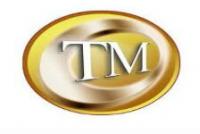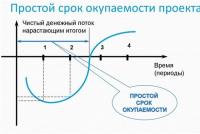Contains sample form filling 3
Balance sheet form 3 Is one of the applications accounting statements, containing all information about the capital of the organization and its changes over several years. Consider the form of the specified application, as well as the procedure for filling it out.
What is form number 3 of the balance sheet
Let's start with the fact that the form under consideration, which characterizes changes in capital, is included in the general financial statements, which are to be formed based on the results of each past reporting year.
Form 3 was approved on 07/02/2010 by order of the Ministry of Finance of the Russian Federation No. 66n, and in 2015, changes were made to the form of this reporting, and now the signature of the head of the organization is enough to approve it - the signature of the chief accountant required earlier is not required.
The report under consideration discloses all information about the changes in the capital (charter, additional, reserve, retained earnings and other reserves of the company) that occurred during the year. It includes the following sections:
capital movement (section 1);
adjustments related to changes in accounting policies and correction of errors (section 2);
net assets (section 3).
Form 3 is available on our website.
How to fill out form number 3 correctly
Complete the above sections form 3 balance sheet sometimes difficult. We will analyze in detail how to reflect the necessary information in it.
Section 1 reflects equity in motion, not only for the reporting period, but also 2 years before it. First, we show the balance on December 31 of the year that preceded the previous one. Then we enter the data for the year before the reporting year and calculate the balance on December 31 of that year. After that, we draw up the movement, as well as the balance at the end of the reporting year. Each indicator has its own column and line of the report.
In section 2, we indicate the changes that have occurred after the approval of the statements for the previous periods. Such changes may occur as a result of the identification of errors or the introduction of any amendments to the constituent documents of the organization, for example, to the accounting policy.
Attention! Section 2 is best completed first, as its data will be used in completing other sections.
Section 3 contains information on the amount of net assets for all three years under review. The calculation of this indicator is made on the basis of information reflected in the accounting records as the difference between the value of assets accepted for calculation and liabilities also accepted for calculation.
The report on changes in capital also belongs to the general package of documents within the framework of financial statements. This document is drawn up by objects of commercial activity. Small businesses, as well as structures that are not commercial, may not make this type of reporting.
An example of a report form in accordance with Form 3 (OKUD 0710003):
This type of accounting documentation is adopted in order to reflect all the changes that have occurred with the constituent parts of capital, as well as the events that preceded this. That is, if any expenses or incomes had an impact on capital, then they must necessarily be displayed in this format of annual financial statements.
The report consists of three parts:
- The first part, called " Capital flows».
- The second part is called “ Adjustments for changes in accounting policies, as well as correction of errors».
- The third part is called " Net assets».
The capital change report, the form of which is recommended by the Ministry of Finance, may undergo the necessary adjustments and changes related to the company's activities in order to maximize its compliance with its requirements for the convenience of reviewing documentation. But the sequence of presentation of information should correspond to the official model.
Form 3 of the statement of changes in equity should consist of the three sections indicated above, each of which is presented in the form of a table. The first section examines the structure of equity capital, the second is intended to explain and display the changes that have occurred to it. The third part shows the size of net capital at the beginning of the period, as well as at its end.
Filling out the form of the Statement of changes in equity
Form 3 financial statements in mandatory should have in its filling indicators of net profit or losses incurred by the company. Also, according to the requirements of the RF Ministry of Finance, all articles must be expressed in monetary terms. In these statements, adjustments for changes in accounting policies, as well as when errors are detected, are supposed to be presented using the accumulation method.
Capital transactions must be reflected. Additional and reserve types of capital should also appear in the report, as well as the changes that have occurred to them. In this documentation, the enterprises holding shares must show their value in cash, as well as their market position and quantity.
The reporting form must contain the above data, otherwise you must provide an addition to it.
First part

In the first part of this report, there is information about changes in the types of capital owned by this enterprise, as well as on the shares that were purchased by the enterprise from the owners. The same section may indicate the profit that has not found distribution, or uncovered types of losses.
Metamorphoses of the authorized capital can occur in the event of a restructuring of the company, changes in the value, as well as the number of its shares, as well as changes in the accounting policy. If the changes are downward, it is necessary to provide explanations to the document.
Changes in other types of capital are reflected in exactly the same way.
The second part of

For the second part of the report on changes in equity, the following data can be considered a sample of filling:
- Line 3400 shows the amount to be adjusted.
- Line 3410 contains the values \u200b\u200bfor which an adjustment is made, in the event that its reason lies in changes in accounting policies.
- Line 3420 shows the amount of the correction when it is caused by found errors.
- From lines 3401-3502, select the line by which the exact reason for the changes will be indicated.
The second part of this document is to be completed only if corrective measures have been taken. Just as in the first case, for the reporting period is taken this yearas well as the two preceding ones.
The third part

Section number three indicates the net assets of the company for which the form is drawn up. "Net assets" - funds of a non-current and circulating nature, their presence is due to the state of the company. The specified value must exceed the authorized capital. In the event that net assets are less, you should reduce the funds of your own group provided by the founders of the company.
See also a video about compiling booze. reporting and this report in particular:
So, this type of accounting is optional. It is drawn up according to Form 3 recommended by the Ministry of Finance, but which can be changed for the convenience of the enterprise. This form consists of four sheets. The first is the title, the other three are filled in according to the sections. Analysis of the statement of changes in capital allows you to view the profitability of an organization in dynamic development over the past three years, which makes it possible to accurately predict further bankruptcy or, conversely, an increase in profits.
Forms 3, 4 and 6 of the balance sheet are included in the annual financial statements and are appendices to its main forms (balance sheet and statement of financial results):
- form 3 - report on changes in equity;
- form 4 - motion report money;
- form 6 - report on the targeted use of funds.
Forms of application forms, as well as the main forms of accounting, are approved by order of the Ministry of Finance of Russia "On forms of accounting of organizations" dated 02.07.2010 No. 66n. The same document contains a rule stating that with a simplified reporting option, the mandatory forms are a balance sheet, a report on financial results and a report on the intended use of funds, and explanations to them should be drawn up only if absolutely necessary (clause 6).
NOTE! From June 1, 2019, changes have been made to the accounting forms. When compiling reports for 2019, you need to take the edition of 04/19/2019. Key differences: statements can be prepared only in thousand rubles. Millions can no longer be used as a unit. OKVED was replaced by OKVED 2. For other changes see.
Since the report on the intended use of funds (Form 6) is intended to be used when there is a movement of funds for a very specific purpose, it is not always used. Thus, Forms 3, 4 and 6 may not be prepared by persons reporting on the simplified form.
Read about who can use simplified reporting in the material Small Business Simplified Reporting .
But in the reporting set, formed according to its full version, forms 3 and 4 will be included. In this case, Form 6 and other explanations will be drawn up if necessary.
Form 3 of the balance sheet
Form 3 of the balance sheet is a statement of changes in equity. It contains information about the organization's own capital, to which they relate (clause 66 of the PBU on accounting and bookkeeping, approved by order of the Ministry of Finance of the Russian Federation of July 29, 1998 No. 34n):
- authorized (share) capital;
- extra capital;
- reserve capital;
- undestributed profits;
- other reserves.
In addition, the report contains information on own shares repurchased from shareholders.
Form 3 consists of 3 sections:
1. Capital movement
This is a table that shows the change in the organization's capital for 2 years (reporting and previous). It shows how the capital has changed (whether it has increased or decreased) and due to what the changes have occurred.
It is not difficult to fill in the section. First, you need to indicate the balance for December 31 of the year preceding the previous one. Then fill in the indicators for last year and withdraw the capital balance at December 31 of the previous year. Next, you need to reflect the movement and balance of capital at the end of the reporting year. Indicators are reflected in the corresponding columns and lines. For example, if there has been an increase in additional capital due to the revaluation of property, the revaluation amount is reflected in the line “Revaluation of property” (column “Additional capital”).
2. Adjustments due to changes in accounting policies and correction of errors
The title of the section speaks for itself: it contains information on adjustments to the amount of capital caused by a change in accounting policy or related to the correction of significant errors of previous years identified after the approval of the financial statements of the last year. It is advisable to fill it out even before section 1, since its data is used to determine the indicators of the first section.
3. Net assets
Read more about this order in the material "A new procedure for calculating net assets was approved" .
You can download Form 3 on our website.
 Download the report on changes in equity
Download the report on changes in equity
Form 4 of the balance sheet
Form 4 of the balance sheet is the common name for the statement of cash flows. It contains information about the cash flow of the organization for the reporting and previous years... Cash flows are disaggregated by current, investment and financial transactions. The receipt and expenditure of funds are shown for each type of activity.
In this case, current operations include operations related to the implementation of ordinary activities. For example, receipts include sales revenue and lease payments, while payments include payments to suppliers and salaries. Investment transactions are transactions related to the acquisition, creation or disposal non-current assets.
Cash flows from financial transactions are classified as flows from operations related to the attraction of financing on a debt or equity basis, which lead to a change in the amount and structure of the capital and borrowed funds of the organization (loans, borrowings, deposits, etc.).
The procedure for filling out the report is described in detail in PBU 23/2011 "Statement of cash flows" (approved by order of the Ministry of Finance of the Russian Federation dated 02.02.2011 No. 11n).
You can also download its form on our website.
Form 6 balance sheet
The sixth form of balance is a report on the targeted use of funds, which is made by non-profit organizations (NPO) and legal entities that receive any targeted funding.
For NPOs, this report is essentially the main one. In this report, they disclose information on the targeted use of funds received to ensure statutory activities. It shows the balance of targeted financing at the beginning of the reporting year, the receipt and expenditure of such funds during the reporting period and their balance at the end of the year.

Form 6, as well as the main reporting forms (balance sheet and report on financial results), has 2 design options: full (Appendix 1 to Order No. 66n) and simplified (Appendix 5 to Order No. 66n). The latter can be made by organizations that have the right to use simplified methods of accounting when drawing up reports in a simplified form.
You can download both versions of Form 6 on our website.

Outcome
Forms 3, 4 and 6 are attachments to 2 main accounting reporting documents: balance sheet and financial results report. Forms 3 (statement of changes in equity) and 4 (statement of cash flows) are compulsory if the main reports are created in their full version. Form 6 (report on targeted use of funds) is drawn up only if the reporting entity has earmarked funds. As well as the 2 main forms of reporting, Form 6 can be drawn up according to a simplified version by an organization that has the right to maintain simplified accounting. For 2019, you need to use the new edition of all these forms.
Content and procedure for drawing up form No. 3 "Statement of changes in capital"
Form No. 3 "Statement of changes in equity" is a separate form of financial statements, drawn up in the form of explanations to the balance sheet and the income statement. The statement of changes in equity discloses the structure and movement of the company's capital. According to clause 66 of the Accounting Regulations, the company's equity capital includes: authorized, additional and reserve capital, retained earnings and reserves.
When forming the Statement of Changes in Capital, the organization must take into account that the individual items provided for in the sample that do not have reporting period numerical values \u200b\u200bare not provided, except for cases when the item had data in the previous reporting year. If the organization has a significant change in capital that is not provided for in the sample, then it independently includes the missing item. In addition, it is allowed to divide the column "Additional capital" into two parts - "Share premium" and "Revaluation of assets", taking into account their different nature of formation and use.
Section I "Capital" - provides data on the availability of movement of all types of sources of the organization's own funds: authorized (joint) capital, additional capital, reserve fund, retained earnings of previous years. It also shows targeted funding and receipts from the budget and sectoral and inter-sectoral extra-budgetary funds.
Column 3 "Authorized (pooled) capital" Filled in according to account 80 in the General Ledger. The authorized capital of a joint stock company is equal to the par value of all shares issued by it.
The authorized capital can be reduced only after it has been reported to all creditors of the organization. At the same time, creditors may require that the organization pay off debts with them ahead of schedule (Article 90.101 of the Civil Code of the Russian Federation).
Column 4 "Additional capital". To be filled in according to the data of account 83 "Additional capital".
An increase in additional capital is possible if:
The property was revalued;
Share premium was received.
A decrease in additional capital is possible if:
An item of fixed assets that was previously revalued is written off;
Additional capital funds are used to increase the authorized capital or to cover losses incurred in the reporting year.
Column 5 "Reserve fund". Filled in according to account 82 "Reserve capital". The amount of the reserve fund is reflected, created in accordance with the legislation, that is, without fail.
The reserve fund is created at the expense of net profit, and it can be used to cover losses and to redeem the bonds of a joint-stock company and redeem its shares, if there are no other funds.
Column 6 "Retained earnings of previous years - total". Filled in according to account 84 "Retained earnings (uncovered loss)".
Column 7 "Total" summarizes the lines of changes in equity in the reporting year.
Section II "Reserves" indicates the indicators "Reserves formed in accordance with the legislation (in joint stock companies) and" Reserves formed in accordance with constituent documents "(in enterprises of other forms of ownership) - this is the reserve capital
The indicated lines are filled in on the basis of data on account 82
“Estimated reserves” - reflects the presence and movement of estimated reserves, which are also subject to deciphering in the event of the formation of their different types. The lines are filled in according to the data of accounts 59 "Provisions for impairment of investments in securities", 63 "Provisions for doubtful debts"
"Reserves for future expenses" includes a list of created reserves for future expenses, which should be given in accounting policy enterprises. To fill out this indicator of Form No. 3, you must use the data on account 96 "Reserves for future expenses"
Mandatory reporting form 4 reflects the size of the balance of funds at the beginning and end of the reporting period. 4400 - cash flow balance - the sum of lines 4100, 4200, 4300. If you get a negative number, reflect it in parentheses. 4450 - balance at the beginning of the reporting period - the amount of cash balance at the beginning of the year. 4500 - balance at the end of the reporting period - the amount of cash balance at the end of the year. 4490 - the impact of changes in the exchange rate in relation to the ruble - reflects the total amount of exchange rate differences arising from the conversion of currency into rubles. It is important to know that the form of the cash flow statement does not reflect a complete list of categories of transactions, one transaction may belong to several categories. So, for example, a single payment can refer to different streams. In this case, the amounts are distributed across the streams.
The procedure for filling out financial statements
Organizations should keep in mind that in the transcripts, cash flows associated with the payment (receipt) of interest and dividends, as well as with the results of extraordinary circumstances, should be disclosed separately. Cash flow data for income taxes and other similar mandatory payments should be reported separately in current operations, unless they can be specifically linked to investing or financing activities. When funds are received from the sale of foreign currency (including the obligatory sale) to accounts in credit institutions or to the organization's cash desk, the corresponding amounts are reflected in the data on current activities as cash receipts from the sale of fixed assets and other property.
How to fill in the cash flow statement - form 4
By general ruleif the time allotted for the submission of reports ends with a weekend or a holiday, the time for submission is extended until the first following working day. For violation of the rules for submitting reports, the accountant, the head of the enterprise are punished with a fine. Along with Form 4, you also need to submit a completed balance sheet (Form 1), which can be downloaded in this article, a statement of financial results (Form 2, former profit and loss statement), and Form 2 can be downloaded here.
You also need to fill out a report on changes in equity (Form 3). You can download the form and completed sample Form 3 here. Cash flow statement sample filling Form 4 begins with the so-called "header" of the form.
First, a line with the organization's data is filled in: name, identification code, the type of activity is indicated (must correspond to the constituent documents).
Cash flow statement form 4: filling out
Attention
An example of filling out a Cash Flow Statement Fill out Form 4 of the financial statements based on the following data: Get 267 video lessons on 1C for free:
- Free video tutorial on 1C Accounting 8.3 and 8.2;
- Tutorial on the new version of 1C ZUP 3.0;
- A good course on 1C Trade Management 11.
Operation name Corresponding accounting account Amount (rubles) Balance den. funds in cash Dt 50 6 000 Balance den. funds in the current account Дт 51 170 000 Receipt of cash from buyers for shipped products (including VAT) Кт 62 885 000 (including VAT 135 000) Receipt of advance payments from buyers Дт 62 59 000 (in including VAT 9,000) Payment to suppliers for materials and raw materials Dt 60 82 600 (incl.
The procedure for drawing up a statement of cash flows (form 4)
Then there is a division of cash flows into three categories: current transactions, investment transactions and financial transactions. Each of these categories is divided into two subcategories: receipts and payments. Before each type of transactions there are two columns in which it is necessary to reflect the amount of money passed on these transactions: column 3 for the reporting year, column 4 - for the previous reporting year.
When filling out Form 4 for 2014, you need to reflect information for 2014, 2013. Filling in the section "Cash flows on current transactions" Income: 4110 - the total amount of receipts is indicated. 4111-4119 - their decoding:
- sale of goods, works and services
- payment of funds, for rent, licenses, royalties
- assignment of claims for cash payments
- other supply.
Payments are built on a mirror basis: 4120 is the total amount of payments.
The nuances of filling out forms No. 3, 4 and 5 of the annual financial statements
- From the sale of non-current assets (intangible assets, real estate, fixed assets), financial investments in these assets are not included.
- From transactions to alienate the share of other companies
- From the sale of debt securities, the return of previously issued loans
- From income in the form of investments in enterprises, shares, deposits
- Other supply.
Payments: 4220 - total amount of payments. 4221-4229 - decryption:
- Expenses for renovation, equipment repair, scientific research, incl. and non-current assets
- Purchase of stakes in other companies, shares
- Purchase of debt securities, rights of claim, spending on loans
- Interest on liabilities arising from investment transactions
- other payments.
In line 4200 of the cash flow statement, the balance of cash flows from investment operations is indicated.
Filling out forms 3, 4 and 6 of the balance sheet
Send by mail Form 3 of the balance sheet, as well as 4 and 6, is an attachment to it. We will tell you about who and when composes these forms in our article. When are forms 3, 4 and 6 of the balance sheet Form 3 of the balance sheet Form 4 of the balance sheet Form 6 of the balance sheet Results When are forms 3, 4 and 6 of the balance sheet? Forms 3, 4 and 6 of the balance sheet are included in the annual financial statements and are appendices to its main forms (balance sheet and statement of financial results):
- form 3 - report on changes in equity;
- form 4 - cash flow statement;
- form 6 - report on the targeted use of funds.
Forms of application forms, as well as the main forms of accounting, are approved by order of the Ministry of Finance of Russia "On forms of financial statements of organizations" dated 02.07.2010 No. 66n.
In addition to him, also surrender:
- form 1 (completed balance sheet);
- form 2 (report on financial resultsformerly known as the profit and loss statement);
- form 3 (statement of changes in equity).
Filling out Form 4 You can download the Form 4 cash flow statement here. Form header Filling out begins with the form header. In this case, the sequence of actions is as follows:
- First, a line is filled in which data about the organization is entered. This is the name of the company, its identification code and type of activity (according to the constituent documents).
- After that, cash flows are divided into three categories of operations: current, investment and financial.
Rules for filling out Form 4 of the financial statements
Line 4120 indicates the total amount of payments, and lines 4120 through 4129 are deciphered
- money spent on the purchase of goods, works and services;
- salary fund;
- interest on loan obligations;
- finances spent on paying taxes and other mandatory payments;
- other payments.
Current transactions include all transactions that cannot be reliably assigned to other sections. Line 4100 of the document indicates the balance of cash flows. Cash flows from investment operations Investment operations mean investments in research projects, as well as equity participation in other enterprises, the cost of payments under contract agreements and payments to individual employees in connection with investment activities.
Line 4210 indicates the total amount of receipts.
For the completed second section of Form 4, see the completed sample report, which can be downloaded from the link below. Completion of the section "Cash flows from financial transactions" Financial transactions are associated with raising additional capital in the form of loans, borrowings or the sale of a share in equity. Receipts: 4310 - total receipts. 4311-4319 - their decoding:
- Obtaining credit funds
- Increase in member contributions
- Issue of shares
- Issue of debt securities (bonds).
Payments: 4320 - the total amount of payments. 4321-4329 - their decoding:
- Owners when buying their shares, shares in case of exit
- Part of the profit
- Payment on debt securities, obligations (loans, borrowings).
When filling out the data for each category of Form 4, you need to note the balance: the difference between payments and receipts.






